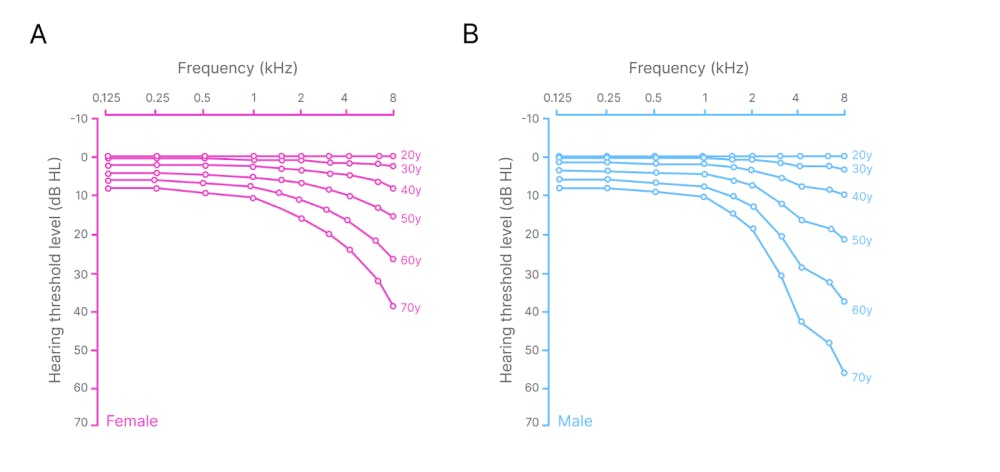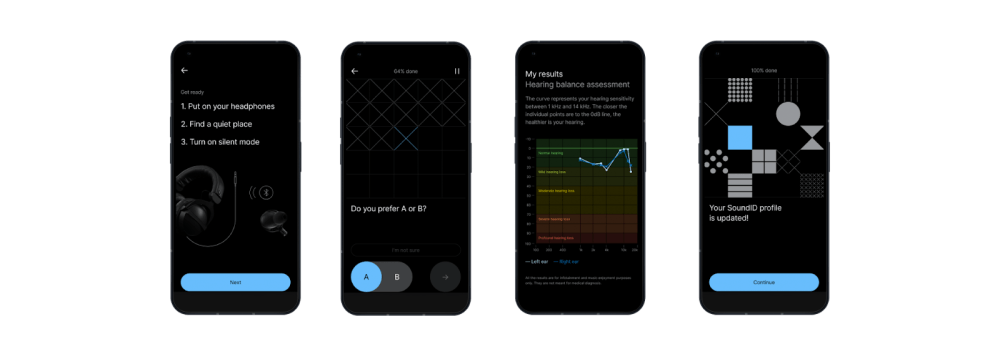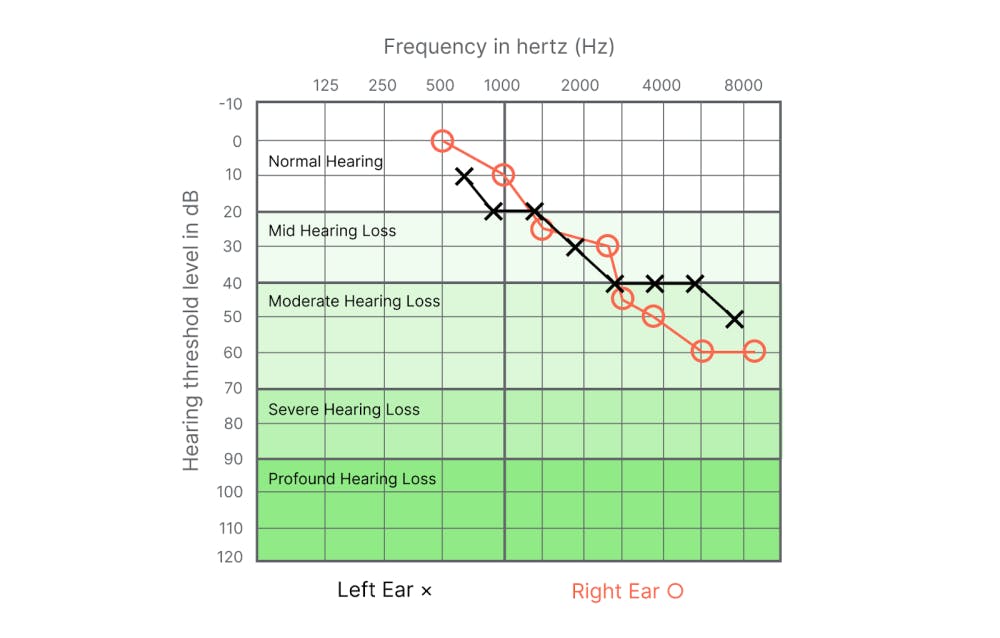Sound plays a crucial role in our daily existence, impacting aspects such as communication, entertainment, situational awareness, and even our sense of equilibrium. Therefore, it is essential to maintain a keen awareness of the well-being and condition of your hearing, both in the short and long run. For both our long-term health and enjoyment of life, we need to safeguard and preserve our auditory capabilities. Furthermore, if we track our hearing ability, we open the opportunity to customize our listening experiences to align with our sound-related requirements and preferences.
Hearing sensitivity is a fundamental concept of hearing, and we measure the perceived volume of sound using units called decibels (dB). To assess an individual’s hearing sensitivity, we measure their capacity to detect tones at various frequencies or pitches and then compare these results to established standards. Natural factors, such as age or illness, can affect our hearing health. For example, as we age, our ability to hear high-frequency sounds tends to decline (see Fig. 1). Beyond these natural factors, exposure to loud noises in our surroundings can lead to lasting, perhaps even permanent, alterations in our hearing sensitivity. As our hearing changes, so does our perception of sound, which in turn impacts our ability to hear and comprehend conversations and even influences our enjoyment of music.


Sonarworks’ goal is to improve our users’ enjoyment of all kinds of audio experiences. To achieve this, we developed SoundID, allowing individual listeners to optimize their playback devices to match their personal hearing ability and preferences. This customization improves the enjoyment of audio content, including music, podcasts, and even phone calls. SoundID can assist people with hearing impairments to make audio content more accessible. Customizing sound to their unique hearing ability and sound preferences allows individuals with mild hearing deficiencies or even more significant impairments to better enjoy their favorite music, movies, and other audio content. SoundID does not replace medical treatment for hearing ailments but can enhance everyone’s ability to enjoy audio content.
Hearing loss can affect anyone at any age, whether due to noise exposure, attending loud concerts, or medical conditions. Therefore, it’s crucial to maintain an awareness of our hearing health over time. In pursuit of this goal, we have enabled SoundID with tools to assess your current hearing status and keep you informed about any changes in your hearing health over time. SoundID is also designed to offer early notifications should it detect any unexpected decline in your hearing abilities.
The Hearing Test is a central feature of the SoundID app, providing a convenient method for remotely assessing your hearing sensitivity. It’s a user-friendly process that doesn’t require any technical expertise. The test is conducted entirely on your mobile device, using your headphones. Your results are presented on a graph called an audiogram (Fig 2), which illustrates how your hearing compares to both the average listener and your peer group’s average sensitivity.

Each of your ears undergoes separate testing, resulting in a personalized hearing profile. This profile is utilized to customize the sound you hear, enhancing your listening experience across all types of audio content. SoundID offers two distinct types of personalized sound correction based on your hearing. These two compensations enhance the nuances of the music you listen to, allowing you to choose the correction type that best suits your preferences.
→ One compensation profile accounts for how your hearing deviates from the norm, based on international standards (ISO 7029:2017). This correction ensures that you hear music as your peers do.
→ A second compensation profile is created to equalize both ears to an optimized singular baseline, centering the soundfield you hear. It is increasingly common for one ear to perform better than the other due to the increased use of mobile devices and selective exposure of the ears to external noises.
It’s in everyone’s best interest to preserve our hearing, and SoundID offers a simple and efficient tool for monitoring your hearing status. Since we all desire to enhance our enjoyment of the sounds in our lives, why not utilize the same app to keep tabs on the condition of your hearing? You can find out more about SoundID by visiting our website or keep learning about the latest findings, research, and data reports in our blog.




